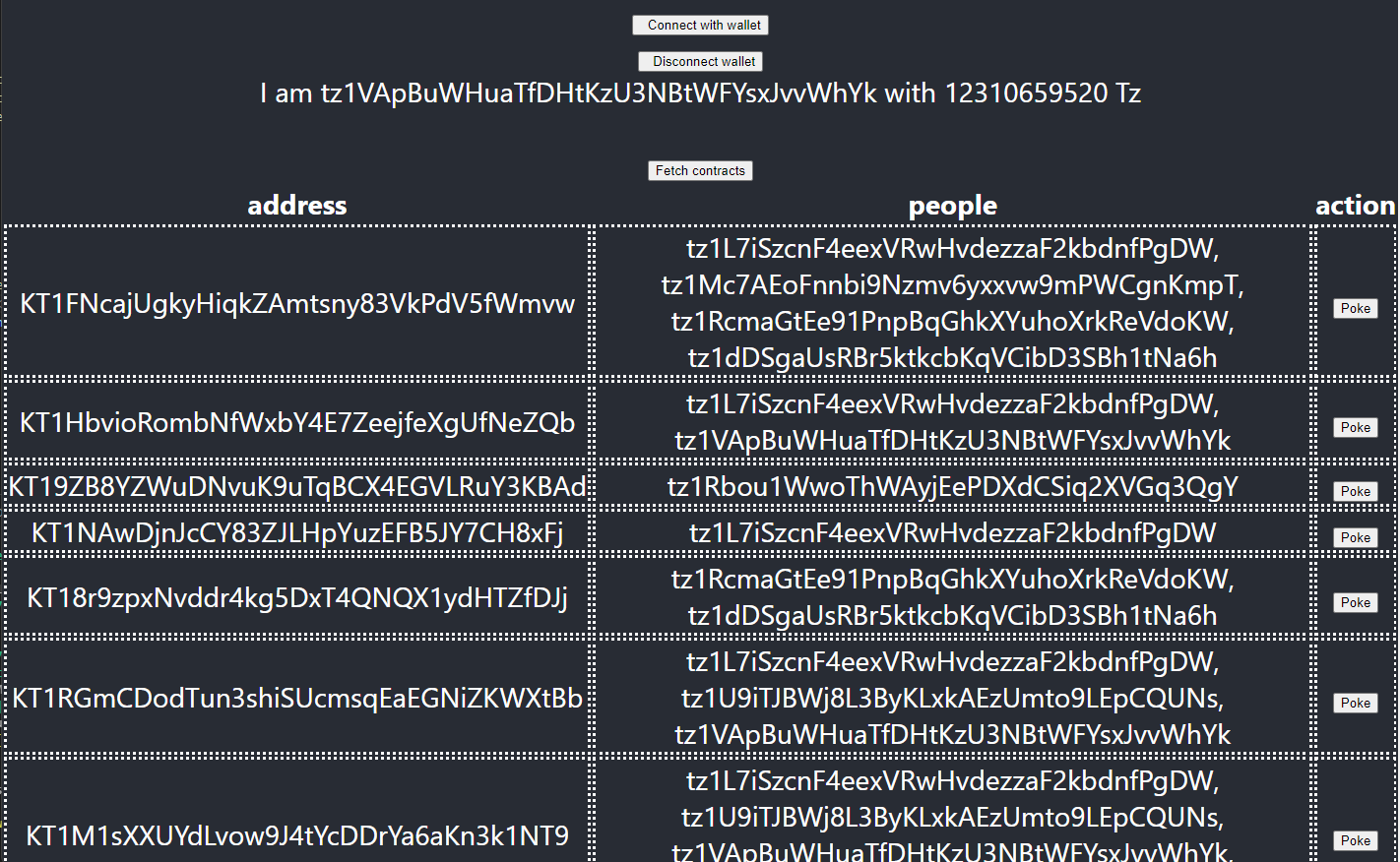Create your minimum dapp on Tezos
dApp : A decentralized application is a type of distributed open source software application that runs on a peer-to-peer (P2P) blockchain network rather than on a single computer. DApps are visibly similar to other software applications that are supported on a website or mobile device.
This tutorial shows you how to create a poke game on smart contract. The game consists on poking the owner of a smart contract. The smart contract keeps a track of user interactions and stores a trace.
Poke sequence diagram.
You will learn :
- How to create a Tezos project with Taqueria.
- How to create a smart contract in JsLIGO.
- How to deploy the smart contract a real testnet named Ghostnet.
- How to create a frontend dApp using Taquito library and interact with a Tezos browser wallet.
- How to use an indexer like TZKT.
Prerequisites
This tutorial uses Typescript, so it will be easier if you are familiar with JavaScript.
-
Make sure that you have installed these tools:
- Node.JS and NPM: NPM is required to install the web application's dependencies and node version >=20
- Taqueria, version 0.62.0 or later: Taqueria is a platform that makes it easier to develop and test dApps.
- Docker: Docker is required to run Taqueria.
- jq: Some commands use the
jqprogram to extract JSON data. yarn: The frontend application uses yarn to build and run (see this article for details about differences betweennpmandyarn).- Any Tezos-compatible wallet that supports Ghostnet, such as Temple wallet.
-
Optionally, you can install
VS Codeto edit your application code in and the LIGO VS Code extension for LIGO editing features such as code highlighting and completion. Taqueria also provides a Taqueria VS Code extension that helps visualize your project and run tasks.
The tutorial application
In this tutorial, you create a simple game where the user is poking though a dApp. The user interacts with the smart contract through a web interface, where they can see the current state of the contract and send poke commands to it. The contract responds by updating its storage with the user's address. Alternately, a user can also poke the contract deployed by other users.
The application looks like this:

The code for the completed application is in this GitHub repository: solution
When you're ready, move to the next section Create your minimum dApp on Tezos to begin setting up the application.